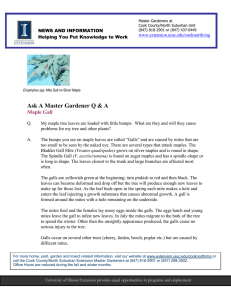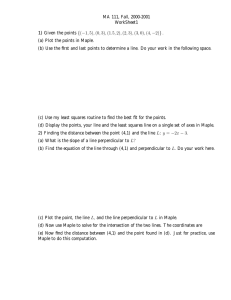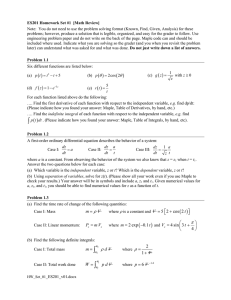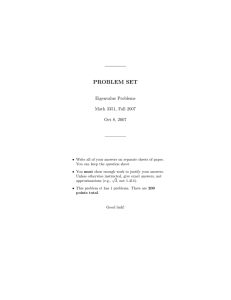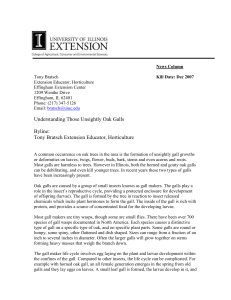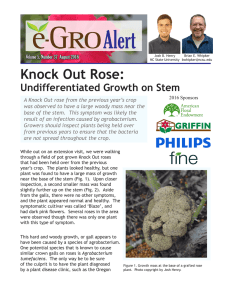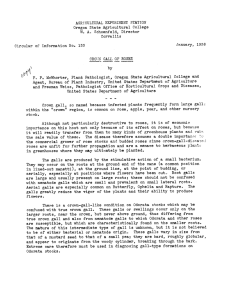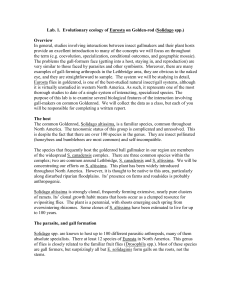Maple Eyespot Gall By Veronica Bowermaster UGA Master Gardener Extension Volunteer
advertisement
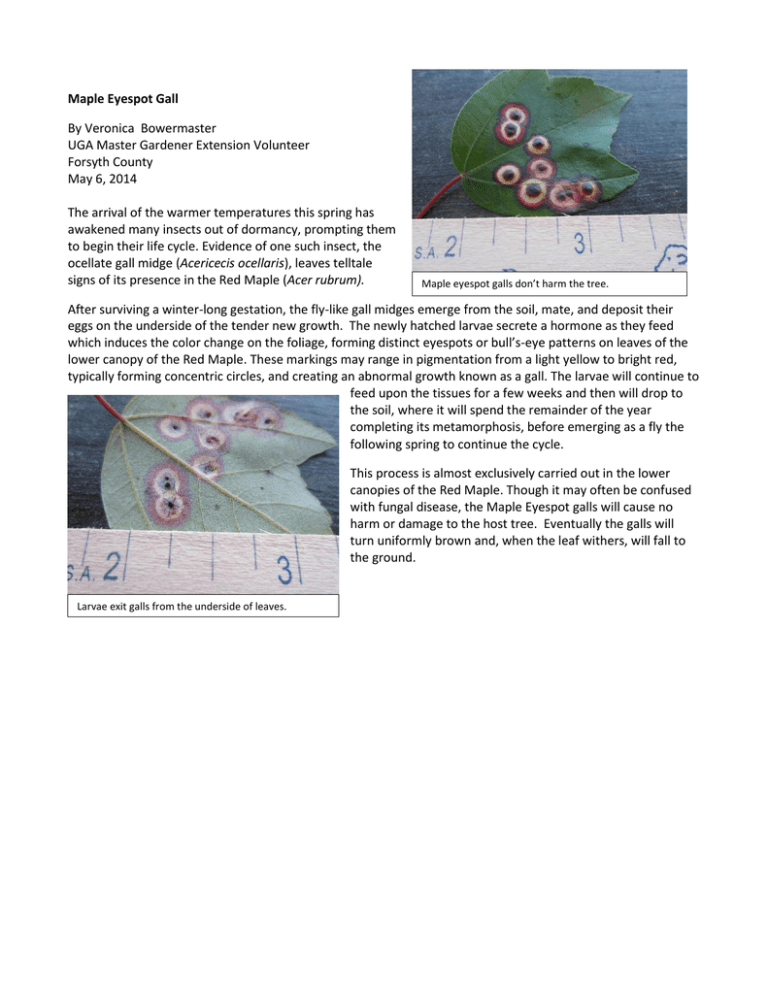
Maple Eyespot Gall By Veronica Bowermaster UGA Master Gardener Extension Volunteer Forsyth County May 6, 2014 The arrival of the warmer temperatures this spring has awakened many insects out of dormancy, prompting them to begin their life cycle. Evidence of one such insect, the ocellate gall midge (Acericecis ocellaris), leaves telltale signs of its presence in the Red Maple (Acer rubrum). Maple eyespot galls don’t harm the tree. After surviving a winter-long gestation, the fly-like gall midges emerge from the soil, mate, and deposit their eggs on the underside of the tender new growth. The newly hatched larvae secrete a hormone as they feed which induces the color change on the foliage, forming distinct eyespots or bull’s-eye patterns on leaves of the lower canopy of the Red Maple. These markings may range in pigmentation from a light yellow to bright red, typically forming concentric circles, and creating an abnormal growth known as a gall. The larvae will continue to feed upon the tissues for a few weeks and then will drop to the soil, where it will spend the remainder of the year completing its metamorphosis, before emerging as a fly the following spring to continue the cycle. This process is almost exclusively carried out in the lower canopies of the Red Maple. Though it may often be confused with fungal disease, the Maple Eyespot galls will cause no harm or damage to the host tree. Eventually the galls will turn uniformly brown and, when the leaf withers, will fall to the ground. Larvae exit galls from the underside of leaves.
